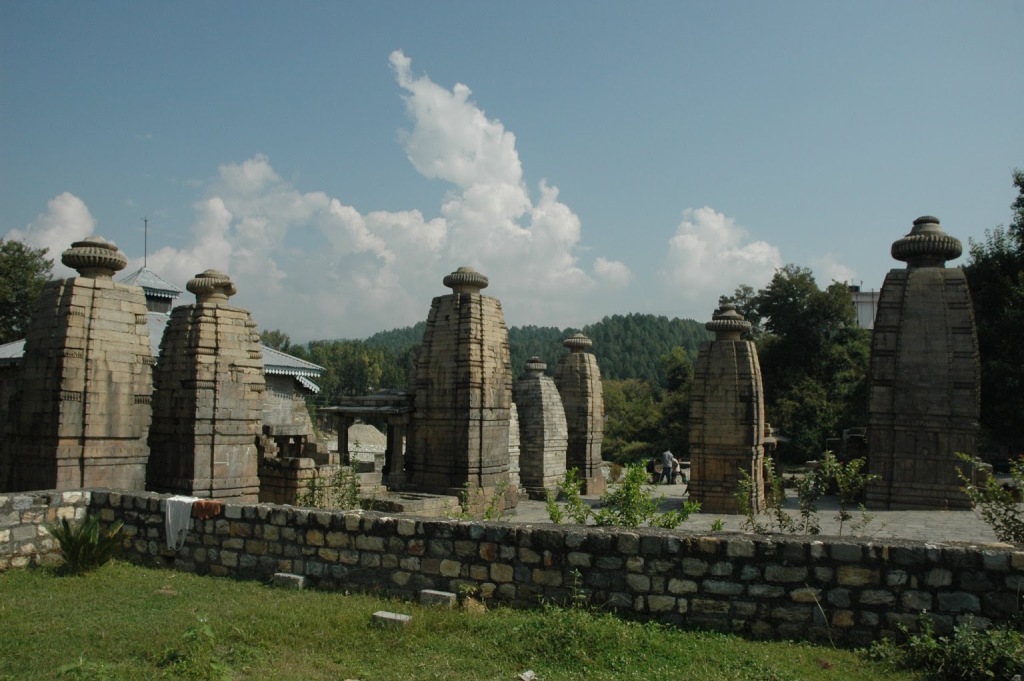Jageshwar Group of Temples, Uttarakhand

Address
Jageshwar Group of Temples, Jageshwar Dham, Uttarakhand-263623
Diety
Jageshwar
Introduction
The Jageshwar Group of Temples, situated near Almora in the Himalayan state of Uttarakhand, India, is a significant pilgrimage site that comprises over 100 temples dating from the 7th to the 12th century. These temples are spread across three main clusters: the Dandeshwar Cluster, the Jageshwar Cluster, and the Kuber Cluster.
Puranic Significance
- The Jageshwar temples are located at an altitude of 1,870 meters and are nestled within the Jataganga river valley near a Deodar forest (Cedrus deodara).
- The temple clusters can be accessed via a satellite road branching off to the east from the Artola village on the Almora
Special Features
Architectural Diversity:
- The Jageshwar Group of Temples primarily follows the North Indian Nagara style of architecture, with some exceptions displaying South and Central Indian architectural designs.
- The temple site extends for about 3.5 kilometers along the Jataganga rivulet and is located in a narrow-forested valley adorned with oaks, deodars, rhododendrons, and pine trees.
- It is believed that Jageshwar was once part of the ancient pilgrimage route to Kailash Man Sarovar and is mentioned in the travelogues of Huan Tsang.
Pilgrimage Town and Heritage:
- Jageshwar is a Hindu pilgrimage town and holds a sacred place as one of the Dhams (pilgrimage regions) in the Shaivism tradition.
- The site is protected under Indian laws and is managed by the Archaeological Survey of India (ASI).
- The origins of the Jageshwar temple complex are somewhat unclear due to its remote location, which has limited comprehensive studies. The temples and stone steles show evidence of various architectural styles and building periods ranging from the 7th to the 12th century.
- According to some prevailing theories, Adi Shankara may have built some of these temples, although there is no textual or epigraphical evidence to support this claim. Architectural features of some of the temples date back to the early 7th century, which predates Adi Shankara’s life (c. 788-820 CE).
- Many of the temples were constructed by the Katyuri dynasty, which ruled the area from the 7th to the 14th century. These temples were later maintained by the Chand rulers (15th to 18th century). Inscriptions in the temples also mention Malla Kings. Historical evidence indicates that Salivahana, the king of Ayodhya, built the temple of Gangnath, and King Vikramaditya built the temple of Mahamritunjay.
- Over 25 inscriptions from various periods, primarily between the 7th and 10th centuries, are found on the walls and pillars of the Jageshwar temples. These inscriptions are in the Sanskrit language and Brahmi script.
- Most of the temples in the complex are dedicated to Lord Shiva, although there are other temples nearby that honor Lord Vishnu, various Shakti goddesses, and the Surya tradition of Hinduism.
Festivals
Jageshwar Monsoon Festival during the Hindu calendar month of Shravan (July-August) and the annual Maha Shivrathri Mela (Shivrathri festival), which takes place in early spring are the most famous festivals celebrated in this Temple complex.
Century/Period/Age
7th century CE
Managed By
Archeological survey of India.
Nearest Bus Station
Almora
Nearest Railway Station
Almora
Nearest Airport
Pantnagar









